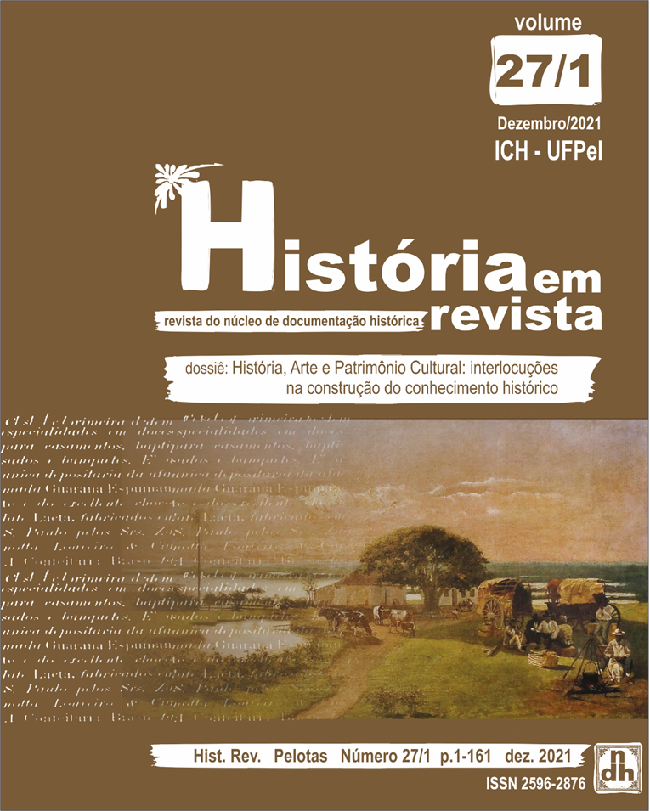A POÉTICA DA CARNE DILACERADA EM TROUXAS ENSANGUENTADAS
Resumo
The poetics of the torn flesh in Bloody Bundles
Resumo: O presente artigo tem como tema a obra Trouxas Ensaguentadas, de Artur Barrio, apresentada nos anos 1969 e 1970, nas cidades do Rio de Janeiro e Belo Horizonte. Partindo de um apanhado sobre a evolução da expografia das obras de arte ao longo do tempo, relacionou-se a sucessiva ampliação de linguagens e técnicas havidas a partir da Arte Moderna e Contemporânea a novos conceitos e espaços de exibição, situando a obra nos movimentos que conformaram a Arte Contemporânea, especialmente a Arte Guerrilha. Na sequência, foi detalhada a execução da obra e sua repercussão social, considerando-se o contexto político e social do período da ditadura militar no Brasil e a importância da cultura na resistência política, não apenas naquele ciclo, como também na atualidade.
Palavras-chave: arte contemporânea. ditadura militar no Brasil. arte guerrilha. arte. política.
Abstract: This article has as its theme the work Bloody Bundles, by Artur Barrio, presented in 1969 and 1970, in the cities of Rio de Janeiro and Belo Horizonte. Based on an overview of the evolution of the expography of works of art over time, it was related to the successive expansion of languages and techniques from Modern and Contemporary Art to new concepts and exhibition spaces, placing the work in the movements that shaped the Contemporary Art, especially the Guerrilla Art. Following, the execution of the work and its social repercussion were detailed, considering the political and social context of the period of the military dictatorship in Brazil and the importance of culture in political resistance, not only in that cycle, but also in the present.
Keywords: contemporary art. military dictatorship in Brazil. guerrilla art. art. politics.
Artigo recebido em 27 de maio de 2021 e aprovado em 01 de novembro de 2021.
Autores que publicam nesta revista concordam com os seguintes termos:
1. Autores mantém os direitos autorais e concedem à revista o direito de primeira publicação, com o trabalho simultaneamente licenciado sob a Licença Creative Commons Attribution que permite o compartilhamento do trabalho com reconhecimento da autoria e publicação inicial nesta revista.
2. Autores têm autorização para assumir contratos adicionais separadamente, para distribuição não-exclusiva da versão do trabalho publicada nesta revista (ex.: publicar em repositório institucional ou como capítulo de livro), com reconhecimento de autoria e publicação inicial nesta revista.
3. Autores têm permissão e são estimulados a publicar e distribuir seu trabalho online (ex.: em repositórios institucionais ou na sua página pessoal) a qualquer ponto antes ou durante o processo editorial, já que isso pode gerar alterações produtivas, bem como aumentar o impacto e a citação do trabalho publicado.










